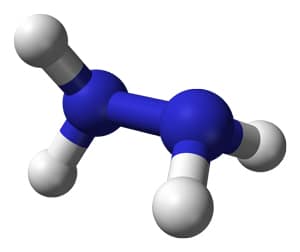
How It’s Used
Hydrazine—also known as Diamine and Nitrogen Hydride—is a clear, colorless, flammable liquid, with an ammonia-like odor. The compound is used in the production of agricultural pesticides; in the manufacture of blowing agents for plastic production; as an anti-corrosion agent in boilers and heating systems; in plating; in solders and fluxes; in textile dyes, during nuclear fuel processing; in explosives; in water treatment; and in photographic developing chemicals.
An additional use is in rocket fuel, and this application has generated the most interest in its detection as a toxic gas. Pioneering work to improve detection methods was started in the late 1970s at the School of Aerospace Medicine in Texas. Interscan is pleased to have been involved in these efforts, and continues to cooperate with NASA and similar agencies in other countries.
The related compounds monomethyl hydrazine (MMH) and unsymmetrical dimethyl hydrazine (UDMH) are also utilized in fuel applications.
Occupational Health/Toxicology
Hydrazine is corrosive and skin contact may cause burns and dermatitis. Inhalation and ingestion cause irritation of the respiratory and digestive systems, respectively. Exposure may also cause central nervous system health effects such as convulsions, tremors, lethargy, seizures, neuritis, and, in severe cases, coma. Long term exposure to hydrazine may cause liver, kidney, and reproductive organ damage.
An interesting case of accidental ingestion of hydrazine aboard ship in 1965 is discussed in this correspondence, to the British Medical Journal.
Full record on hydrazine from Hazardous Substances Data Bank (HSDB), a database provided by the US National Library of Medicine.
Full record on monomethyl hydrazine from Hazardous Substances Data Bank (HSDB), a database provided by the US National Library of Medicine.
Full record on 1, 2 dimethyl hydrazine from Hazardous Substances Data Bank (HSDB), a database provided by the US National Library of Medicine.
Full record on 1, 1 dimethyl hydrazine (UDMH) from Hazardous Substances Data Bank (HSDB), a database provided by the US National Library of Medicine.
The hydrazine entry from NIOSH’s Pocket Guide to Chemical Hazards.
The monomethyl hydrazine entry from NIOSH’s Pocket Guide to Chemical Hazards.
The 1, 1 dimethyl hydrazine (UDMH) entry from NIOSH’s Pocket Guide to Chemical Hazards.
Monitoring Instrumentation
Check out Interscan’s full line of hydrazine gas detection/gas monitoring instrumentation.
